For many tourists the main reason for going to the El Salvador church is to buy a joint entrance ticket to the Cathedral, so that they can get in without having to endure the, often rather long, queues at the Cathedral. Now this is fair enough, and it’s a useful trick to know, but can mean that the El Salvador church itself is often overlooked. This is a bit of shame as it’s an important historical and architectural site in its own right, and the area immediately around it has a good claim to being the original heart of the city.
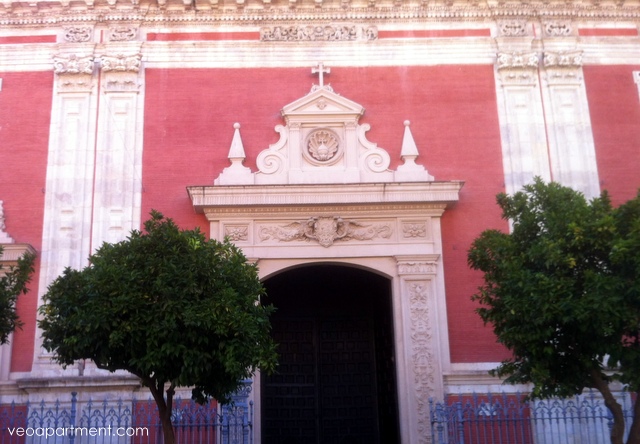
Principal Facade of El Salvador Church
La Iglesia Colegial del Divino Salvador, to give it its full and proper title, is the second largest church in Seville, only the Cathedral being larger. The present building is in the baroque style, which is relatively recent (as these things go – it’s still old), having been completed in 1712 after nearly forty years of work. Like the Cathedral the interior is gloriously (or ostentatiously, depending on your point of view) ornate, with a major league gold altarpiece, and important artworks. These include the two statues of the Christ that are used for the Semana Santa, El Cristo del Amor by Juan de Mesa, and Jesus de la Pasion by Martinez Montañes (there’s a statue of Montañes in the Plaza outside).
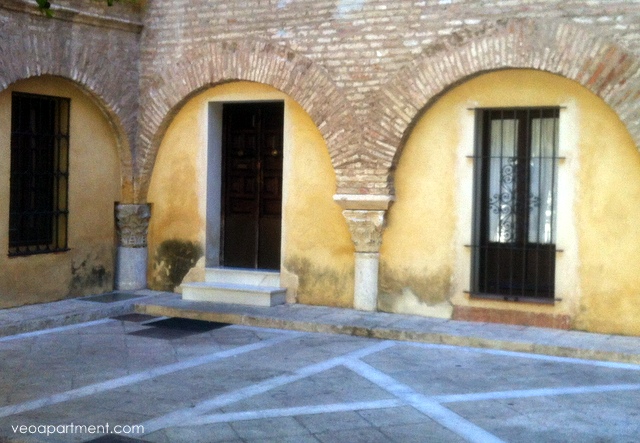
Moorish Arches in the Church Courtyard
But my favourite parts of the church, which also show us the long history of the site, are to be found outside. In the courtyard you can still see the arches that date from the Moorish period, when the Old Grand Mosque (built in 893) stood here, and also the minaret that forms the bottom two thirds of the bell tower (the bells were added later). Although replaced as Grand Mosque in the 12th century (when the new Grand Mosque was built where the Cathedral is now) it remained a Moslem place of worship even after the Christian reconquest of 1248, only being converted to a church in 1340. Eventually, having fallen into ruinous disrepair, it was demolished to make way for the new building.
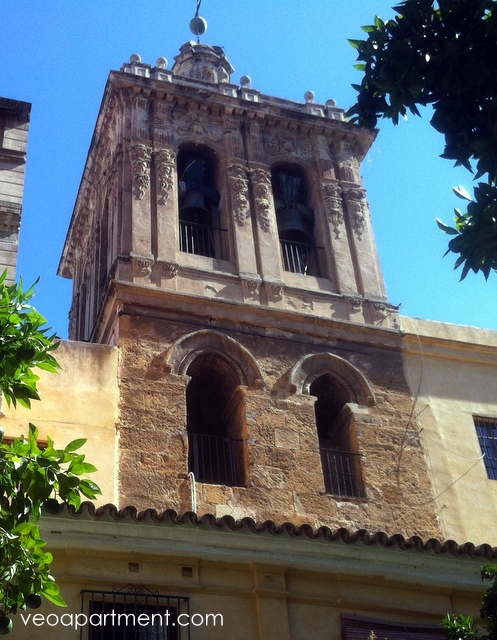
Minaret and Belltower
In Moorish times the area around the Mosque was an important commercial centre, particularly the Plaza Jesus de la Pasion, popularly known as the Plaza del Pan (bread), and the Alcaiceria del Lozo (the pottery market) and the Alfalfa. Even in modern times there is a row of small shops built into the side of the church in the Plaza del Pan.
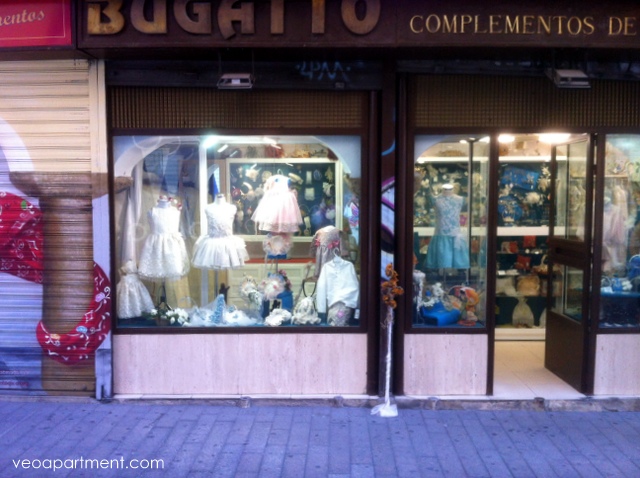
Shops behind the Church
But the history of the site goes back even further, as the original building here was the Roman Basilica. The Plaza del Salvador has probably been a civic space since the building of the Roman wall (which ran along the side of the square opposite the church) in the time of Julius Caesar in the 1st century BC. The Roman forum was just a short distance away in what is now the Plaza Alfalfa.
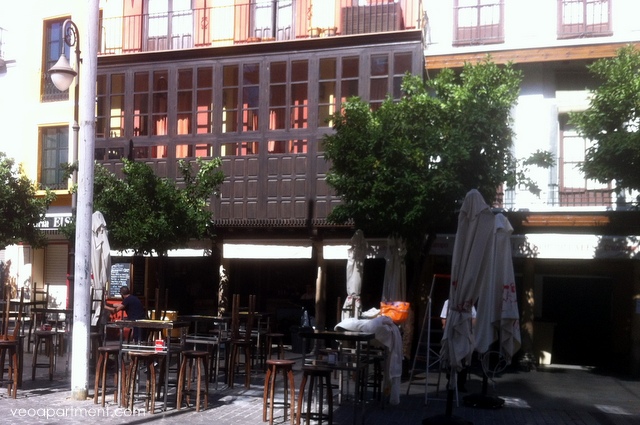
Los Soportales
Other things to look out for include the Iglesia del Antigua Hospital de Nuestra Señora de la Paz (now San Juan de Dios) on the opposite side of the square to the El Salvador (in the 16th century it was a plague hospital), the Cervantes plaques in the Plaza del Pan and Alcaiceria (places mentioned by him in his novels), and Los Soportales, the columns supporting the houses in one corner of the square. This is a building style that has virtually disappeared, but was once common. Finish your explorations with a cold beer at one of the popular bars here.
For somewhere to stay in this fascinating ancient part of the city try one of our range of city centre holiday apartments.
Missed this when i was last in Seville but i`ll be going next time in down,thanks for the hint .
Pingback: Seville | Roman Seville | veoapartment
Pingback: Seville | Cathedral | veoapartment